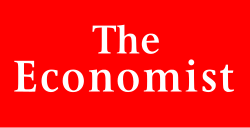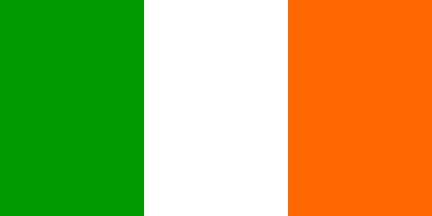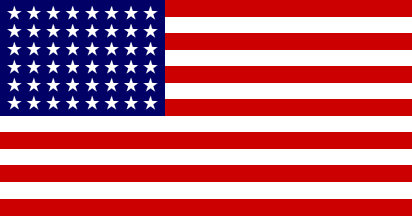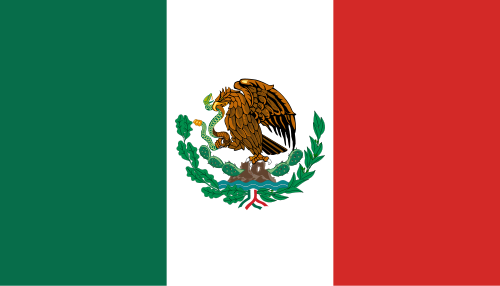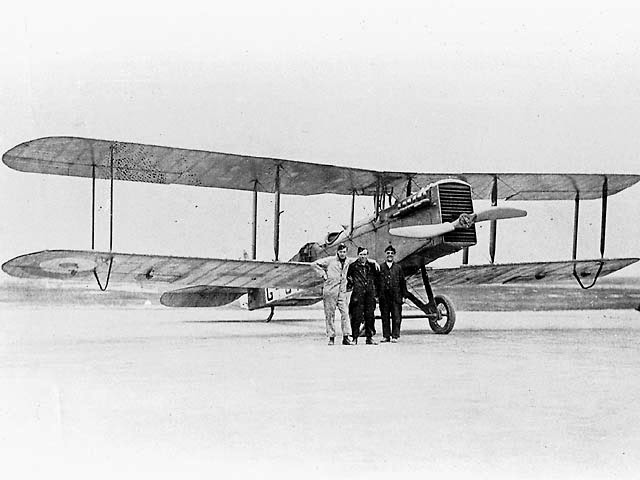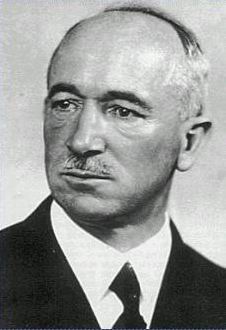A country of strong, faithful men

President Dmowski, Leader of the Polish People
Prior to its final partition, the Polish-Lithuanian commonwealth was a vast state, with an array of diverse cultures and religions. The state also resembled something of a democracy; due to the laws that governed inheritances, around ten percent of the entire population was technically nobility. Seeing as the nobility chose the King, this lead to around one tenth of the population being enfranchised to vote. Poland was also the second state in the world, after the United States, to adopt a constitution.
These values, albeit enlightened for the time, eventually contributed to the downfall of the Polish state. The Dmowski government knew full well, from its birth, that people, particularly those that were members of the upper and middle classes, still remembered the dangerous privileges that their ancestors held. In order to prevent decentralization and uphold its power, the new government almost immediately began a wide scale campaign of demonizing the values of pre-partition Poland. The constitution was painted as a good idea that was corrupted by foreign powers. The nobility, and particularly their exploits, were viewed as un-Catholic and decadent. The diversity of Poland was also shown as a weakness; Dmowski gave multiple lectures at head universities, where he stated that a country diverse in cultures is one that is easy to divide. He said that the partition of Poland was not a military endeavour, but rather a colonial one; using multiple cultures to undermine the others so that in the end they are all subjugated. This kind of thinking was very quickly spread across the academia, and all those who chose to oppose it were either threatened into staying quiet or simply driven away, never to be seen again.
Repression and political assassinations were used from the very onset of the new Polish government. The Police initially sided almost entirely with Piłsudski, and as such, was mostly destroyed when the new government was funded in Poland. Dmowski replaced the “Weak apparatus” that lead the Polish society crumble in the face of the Bolshevik with a new force, of “strong, faithful men”. These men were almost entirely youth, made up of combat inexperienced soldiers. Dmowski did not want them on any front, so instead he gave them the task of maintaining order within the cities. Nearly all cavalry divisions and brigades of the Polish army were dissolved, and the horses, now without purpose, were quickly moved over to the new Police Force. Cities would be patrolled by what was essentially soldiers, riding in pairs on warhorses, armed with high calibre rifles and sabres. These units very rarely had to fire, but they imposed an enormous amount of fear upon and also gave an illusion of strength that helped uphold the new regime. Detectives were very rare, and the power structure was very flat; one Officer sometimes had hundreds of Policemen under his command, and as such the force had an enormous autonomy in how it enforced the law. Criminals were often sentenced on the spot and it was not uncommon for the lowest of the low (Socialists) to be executed in their own houses by overzealous Policemen.
Soon the effects of such a strong government began imprinting themselves upon society. People were widely encouraged to report their neighbour’s crimes, something that created an atmosphere that lacked trust. To have sons in the Police or Army began to be a bigger mark of prestige and power than wealth, and many families prided themselves with the fact that they ‘pruned away the weak branches’ by reporting their more decadent relatives to the government. Religious minorities were tolerated at the start, but soon became to meet more and more obstacles. Albeit the persecution of Jews came from an administrative mistake at first, it soon became commonplace. Muslims were largely left alone due to how little of them there were in Poland, but there were reports of Qurans being confiscated by the government as books that served ‘dangerous ideologies’. Book censorship was also extended to all works of Marx and other socialist philosophers. Albeit Poland recognized the USSR as a state, the historic curriculum in schools (even private ones had to meet some government regulations as to how History and Religion were taught) was soon altered to teach of Imperial Russia as a friend to all Poles, saving the Commonwealth from complete partition by the Germans. Orthodoxy was not the preferred religion, but with a large part of Polish society being made up of people from the east, it was accepted by the government albeit they did not experience as many privileges as the Catholic Church did.

A Polish Church, picture taken in 1930. The Church enjoyed many subsidies from the government and received large tracts of land that were taken away from Socialists and other undesirables.
Cultural and harvest festivals were commonplace in post-1920’s Poland. Encouraged by the government as a strengthening of patriotism and celebration of Polish culture, they were often very loud affairs. Warsaw had a farmer’s parade after each harvest, attended by the president himself. Farmers with the biggest yields were sometimes rewarded with civilian decorations and medals, and their children were given opportunities within the government. Although towns were at first encouraged to show pride and have rivalries with other towns to increase competitiveness, this was gradually erased in the late 1920’s and early 1930’s, as centralisation set in and instead a focus on cooperation was implemented. No collectivisation occurred, but farmers were expected to give up their yield in the case of a war occurring. When the first wave of arrests occurred, much of the land was redistributed to either pro-government farmers or set up under government owned organisation.
The Army
The Polish state, as Dmowski said, was surrounded by “Communists, Prussians and the Undistinguished”. The Polish leader saw both Lithuania and Czechoslovakia as nations filled with people inferior to his own; he claimed that whereas Poland held multiple uprisings to throw off the rule of Prussia and Austria, Lithuania and the Czech Republic never did such a thing and owed their liberty entirely to the work of the British and the French. Dmowski initially sought an alliance with the Germans, and as such treated Lithuania and Czechoslovakia as states undeserving of entry into the Baltic Pact.
Surrounded by enemies, the Polish state needed a strong army. In fact, Dmowski grew the army to such a level that in the late 1920’s it was possibly the strongest in Central Europe; this originated from the necessity of always planning for a three front war. This philosophy changed after the Cieszyn War; the quick defeat of Czechoslovakia showed the Polish Staff that there has to be no worry about an attack from the South. The Polish army also had multiple deployments in Latvia and Estonia – as such, it was necessary to improve the defences at home. During the early 1930’s tons of work were put into designing the first entirely Polish made tank; the 1st Armoured Division. This division did not entirely fit the doctrine of defence – it was designed purely for offensive purposes. With the size of the German Army estimated in 1933 and 1934 at around 300 000 thousand men, the Polish General staff believed that should it come to a one front war, Germany would be entirely defeated by a single push towards Berlin in as short of a time as a month. A two front war was also planned for, but the Polish Government believed that as dastardly as the Germans might be, they would never stoop so low as to invite communism into Europe.
The army sent advisors to France in the early 1920’s, and they made frequent visits to world war one battle sites. Verdun was studied very carefully, and it amazed the Poles just how many casualties were due to artillery fire. As such, heavy long range guns and self-propelled smaller ones were the preferred weapon of war. Development of artillery pieces received top priority, and infantry weapons were often disregarded when budgets were allocated. Polish infantrymen held multiple drills a year – tactics were viewed as the only way to avoid trench warfare. The plan in the case of war was to manoeuvre the Red Army into pockets, where they would be subject to heavy artillery barrage and destroyed completely. Attrition warfare was viewed as suicide due to the vast manpower reserves of the Red Army. The Polish Staff believed that a war with the Soviets would last six months at most; after this period the Soviet Union would simply not have the money to keep fighting. As such, most weapons and food stockpiles in the army were large enough to last around half a year. Factories that produced shells were mostly in the interior, and far away from the Soviet Border. Railways were tested four times a year to ensure that in the case of war they could transport both people and shells to the front quickly enough.
Resistance Movements
Many of the early supporters of Dmowski saw him as a democratic alternative to Piłsudski. He was seen as a rational man that could end the war and begin reforming Poland into a state that resembled the republics of the west. As it became more obvious that Dmowski was not a supporter of the old constitution, and that his state placed the army in front of the people, resistance movements began to form. These were initially opposition groups and open circles of people that wanted Dmowski to revise some of his policies. As it became clear that their peaceful demonstrations would be ignored, more loud approaches were considered. Strikes rolled through Poland in 1927, and were responded to with a small wave of arrests. The workers were not arrested, but the men who organized them were very quickly put behind bars. No executions took place, and most prison sentences were lenient, but it became clear to polish society that the regime will not allow any real resistance to take place.
The first real armed movement formed was the underground “Third of May” organization, named after the date the Polish constitution was signed in 1791. The group recruited from all layers of society. The nobility and rich supported it as a way to regain their privileges, the middle classes wanted to regain their voice in society and the lower classes supported it mostly as a way of achieving a democratic workers state via the means of gradual democratic reform. The movement had around two hundred members at its founding, but membership of the group was around three hundred when it was founded but was estimated to be around twelve thousand in 1935. Around half of that number were active “troops”, expected to perform combat duties in the case of an open rebellion.
Early activism was mostly political, and aimed at strengthening the organizations numbers. The group took active parts in influencing Polish academic circles, and spreading books listed as forbidden to those who desired them. Some crime was involved in order to fund the organization; the sale of alcohol, which was heavily taxed by the government, was a huge income booster for the organization and was viewed as a harmless way of generating revenue. Gdynia, a quickly growing port city, was also used to smuggle goods in from all over the world. Albeit no foreign government ever sought to help the movement, it had contacts with criminal organizations all over Europe.
Later on the organizations primarily purpose shifted to active guerilla warfare. In March 1933 a bridge on the Bydgoszcz-Poznań military railroad was detonated, albeit not much came of it as all military trains were stopped that day due to a fire at one of the stations. Two bombs were detonated in 1934 in Poznań, killing three government officials and wounding twelve civilians. Albeit very effective, these were quickly stopped due to the side effects they had on the civilian population. In the hot summer of 1934 an enormous resistance campaign rolled through Poland, with sixteen police stations in different cities burned down, and anti-government posters posted throughout the poorer districts of Warsaw overnight. The army was called in to crack down on the protests, but the few people that were caught managed to make it through the tortures and withhold any information about the movement. Altogether sixteen members of the resistance were executed.

The government-ran Plumbers Union building in Warsaw burns.
Piłsudski Escapes
Piłsudski was the first leader of Poland after independence. Initially he was viewed by many, including Dmowski, as a hero of the Polish people. However, his awful war performance against the USSR and refusal to sign peace lead to most of the army abandoning him and choosing instead to back the new president in Poznań. Piłsudski was offered amnesty in return for surrendering, but he quickly rejected it – he was delusional that he and his ragged bunch of survivors could retake Warsaw and strike through Prussia into the Soviet Union. These plans, found after the war in his bunker, were judged completely insane by all officers within the Polish Army. After the war Piłsudski was captured, and brought to trial.
The court, controlled entirely by the army, judged him insane and sentenced him to house arrest. An execution was considered, but it was decided that Piłsudski’s deeds in winning Poland’s independence were enough to let him remain alive. For fifteen years, Piłsudski remained with nearly no contact to the outside world. His house arrest ended on Christmas Eve, 1934. His captors allowed him to attend a small church in the area for Christmas Mass. Escorted by twenty policemen, an armoured car and sixty soldiers, he was allowed to part take. However, the resistance movement decided that in order to topple Dmowski, they needed an alternative leader that the people would love.
As Piłsudski kneeled and prayed, a firefight began outside – two large bombs exploded, shaking the Church and causing all the windows to shatter and all the candles to blow out. In darkness, Piłsudski managed to lose his escorting soldiers, and as the firefight went on, he escaped through the window. Albeit an old man he managed to limp into a car provided by the resistance and drive away.
The Dmowski government covered up the fact that their number one prisoner escaped – in fact, two days after New Year’s Eve, it was proclaimed that Piłsudski died at his home and that his body would be cremated in a private ceremony. Dmowski was sure that Piłsudski escaped to Germany, but did not at the time have the resource to pursue him. Largely ignorant of the 3rd of May Movement, he assumed that the operation was a foreign plot and that not much would come of it.
The Warsaw Uprising
With Piłsudski freed from the government, the 3rd of May Movement began the final phase of their plan; the toppling of the Dmowski government. The plan was fairly simple. The leader of the Poles was to be assassinated, and Piłsudski was to suddenly spring up and slip into the leadership position. With the internal divide in the Polish army and the many rivalries within the General Staff, the movement believed that enough generals would side with them to force any remaining supporters of the old regime into accepting Piłsudski as president.
The plan, as improbable as it was, failed from the start. The planned assassination failed due to an electrical failure in the two hundred kilogram charge, hidden in a sewer, which was meant to blow up Dmowski’s cars during a parade. Members of the resistance, seeing the charge not detonate, decided to instead take the matters into their own hands – an officer within the movement stepped out of the crowd, and holding a pistol, fired three rounds at Dmowski’s cars. He failed to kill the leader, only grazing his shoulder, but these three shots were the first in many fired in Warsaw that year. Members of the resistance decided to begin an armed resistance nonetheless.

A Polish flag planted in a barricade erected by the rebels in central Warsaw. Both sides of the conflict used the same flag, something that often created confusion.
The surprise at which the rebellion came initially threw the government and army off their feet. The 3rd of May Movement was made up of many Officers that supported Piłsudski in 1920, and as such they had excellent leadership. Many buildings related to the government were burned down, and some of the bridges across the Vistula were taken over by the rebels. The rebellion lasted a full three weeks, after which the army issued a violent crackdown. The new tanks were called in to help, but due to the mainly urban nature of the fighting they did not see too much action before everything was over. A total of six hundred rebel fighters were killed, and three thousand imprisoned. Around one hundred Policemen died, as well as two hundred soldiers. Close to one thousand civilians died in the fighting, mostly due to the fires that spread through some of Warsaw. Piłsudski died on the 26th of May, shot by a marksman whilst inspecting the fighting in the Praga neighbourhood of Warsaw. His body was buried in a Church yard by the rebels under a grave marked as “the Commandant”. The priest of the church preserved the secret and Piłsudski’s final resting place was undisturbed.

One of the many graves left after the rebellion. The ruined buildings were caused mostly by the wide use of artillery by the Polish army to end the rebellion.


